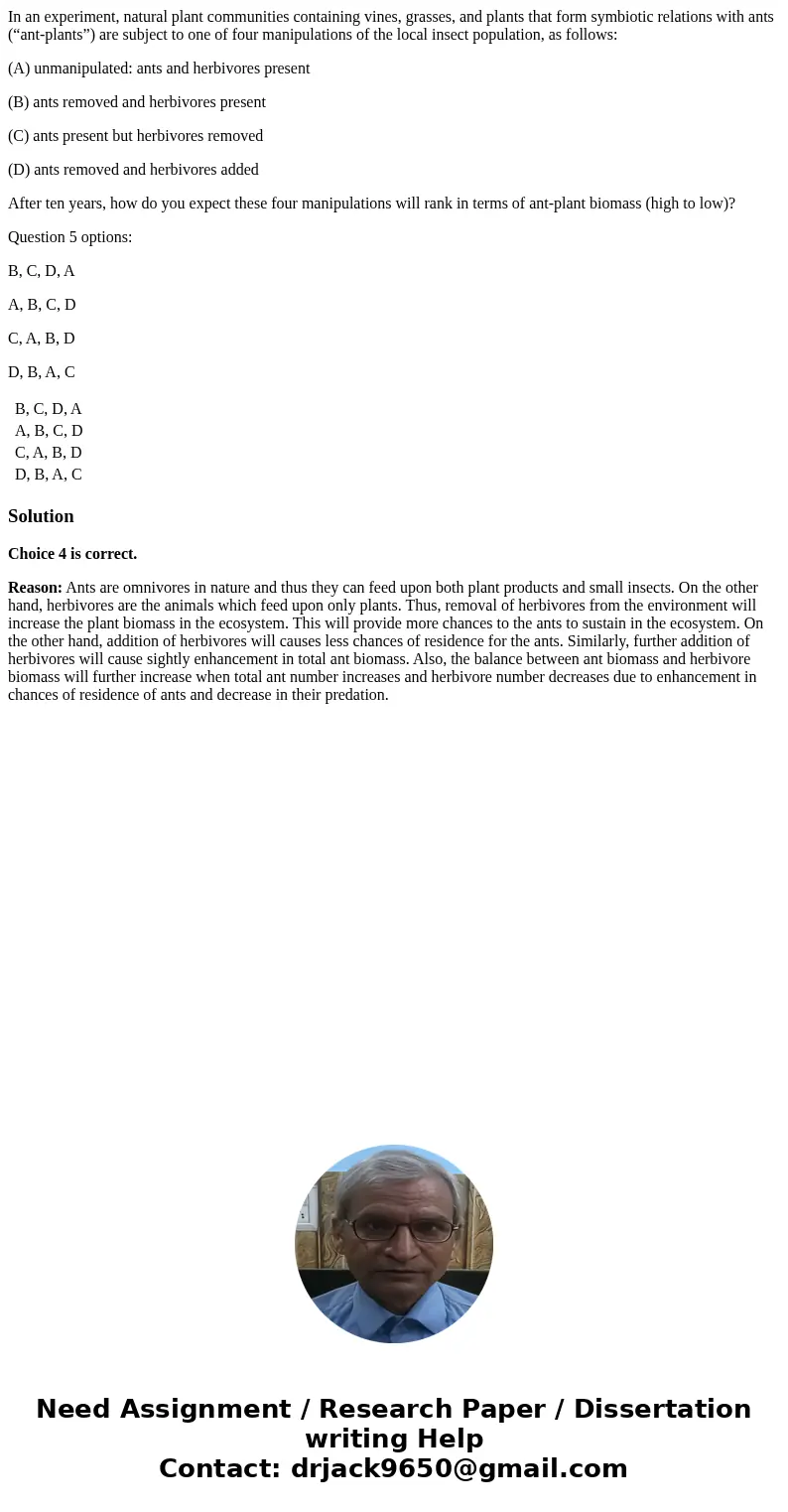In an experiment natural plant communities containing vines
In an experiment, natural plant communities containing vines, grasses, and plants that form symbiotic relations with ants (“ant-plants”) are subject to one of four manipulations of the local insect population, as follows:
(A) unmanipulated: ants and herbivores present
(B) ants removed and herbivores present
(C) ants present but herbivores removed
(D) ants removed and herbivores added
After ten years, how do you expect these four manipulations will rank in terms of ant-plant biomass (high to low)?
Question 5 options:
B, C, D, A
A, B, C, D
C, A, B, D
D, B, A, C
| B, C, D, A | |
| A, B, C, D | |
| C, A, B, D | |
| D, B, A, C |
Solution
Choice 4 is correct.
Reason: Ants are omnivores in nature and thus they can feed upon both plant products and small insects. On the other hand, herbivores are the animals which feed upon only plants. Thus, removal of herbivores from the environment will increase the plant biomass in the ecosystem. This will provide more chances to the ants to sustain in the ecosystem. On the other hand, addition of herbivores will causes less chances of residence for the ants. Similarly, further addition of herbivores will cause sightly enhancement in total ant biomass. Also, the balance between ant biomass and herbivore biomass will further increase when total ant number increases and herbivore number decreases due to enhancement in chances of residence of ants and decrease in their predation.

 Homework Sourse
Homework Sourse